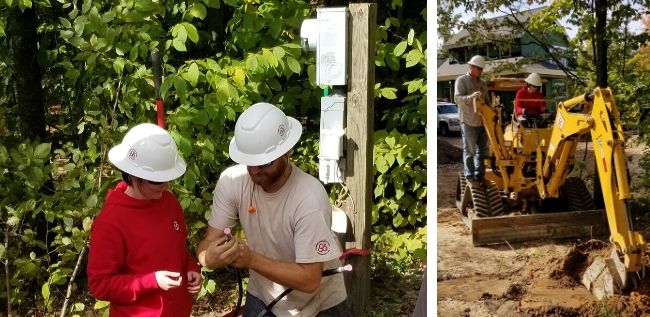If you ask most people what a lineworker does, they’ll tell you they turn the lights back on when the power goes out.
That’s true. Our line crews are on call 24/7/365; often working in the most difficult and challenging weather conditions to keep the lights on for Cherryland’s 36,000 members.
But what about all the rest of the time? What does the day-to-day work look like? I tagged along with one of our crews last October to scope it out.
Here’s what I learned:
A little bit of planning goes along way.
All our crews start the day with a tailboard job briefing. Before we left the shop, we talked through the jobs we were scheduled to work that day and made sure we had all the necessary equipment.
Our first job for the day involved upgrading the underground service to an old farm in Leelanau County that is being renovated into an event center.
Once we got on site, we did another tailboard job briefing that included confirming the plan for the job and identifying any potential safety hazards.
Those tailboards saved us time and also saved us from making potentially fatal mistakes.
Members come first.
One of the things we identified in the tailboard was that we were going to have to temporarily disconnect service to another member to perform the job safely. When our crew foreman stopped by the house to let them know, he found out they were running a home-based daycare.
Running a daycare is stressful enough without the news that you’re going to lose power. The crew foreman could have been dismissive of the impact on this member, but instead he did the opposite.
He worked with the daycare to determine what time we could disconnect their power with the least disruption to their routine. And, we planned our work around their needs.
I was so impressed with the dedication everyone on my crew showed to taking care of our members.

The right equipment goes a long way.
Ask any seasoned lineman and they’ll tell you stories of jobs made infinitely harder and more dangerous by lacking or faulty equipment. In the good old days, every pole required climbing and every hole required digging by hand.
Today, Cherryland’s crews have plenty of tools to make the job better. The workhorse of our underground service crew was the trencher – backhoe on the front, vibrating cable plow on the back, and way more levers than made sense to my novice hands.
It was amazing the amount of work we could accomplish quickly and without causing undue damage to the sites we worked on with the trencher.
Linework is hard.
Even with all that equipment, we still had to do a lot of digging by hand. My crew started me out with a shovel and instructions to help dig a hole near a pedestal where we would be connecting service to an old farmhouse.
Turns out hole digging is not my strength. My crewmates already had a lineman-sized hole dug in the amount of time it took for me to “loosen” the soil where I was digging.
Lucky for the members we served that day, my underperformance couldn’t detract from the exemplary service they got from our line crew. Hats off to “my” crew and all our crews for the work they do every day to take care of our members. If you see one, be sure to #thankalineman this month and every month



I am so happy to be served by Cherryland Electric. It is a great company, and the linemen are second to none. We should all be grateful for the brave people willing to do these jobs for the rest of us.